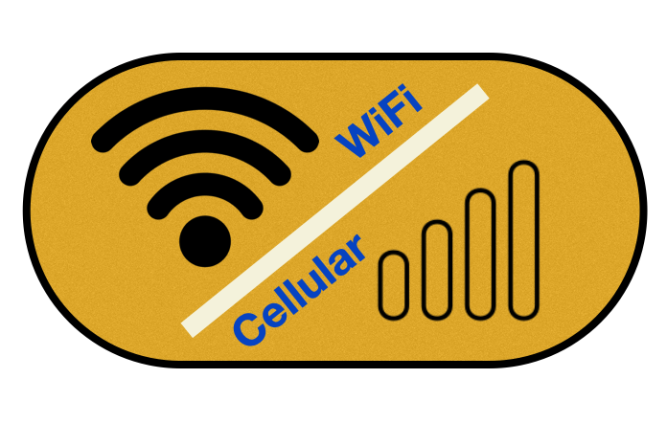
Today, the need for continuous, reliable, and secure connections is greater than ever. With advancements in technology, we now have options like WiFi and cellular signals to meet these demands. WiFi has evolved from WiFi 5 to WiFi 6, 6E, and the emerging WiFi 7. On the cellular side, we’ve seen the progression from 4G LTE to 5G. Understanding how these technologies compare, especially regarding boosting signals, can help users optimize their connectivity.
WiFi vs. Cellular Signal: An Overview
WiFi Technology
WiFi is the go-to solution for indoor connectivity. The latest WiFi standards, such as WiFi 6 and the upcoming WiFi 7, offer significant improvements in speed, efficiency, and capacity. WiFi 6 can deliver speeds up to 9.6 Gbps, while WiFi 7 promises theoretical speeds up to 46 Gbps. These advancements support high device density, making WiFi ideal for home and office environments where multiple devices are connected simultaneously.
However, it’s important to note that these speeds represent the maximum local network capabilities. The actual internet speeds you experience are limited by your Internet Service Provider (ISP) and the plan you have subscribed to. So, even if your WiFi can handle ultra-fast speeds, your connection to the internet will be restricted by your ISP’s bandwidth.
Cellular Signal Technology
Cellular technology has also made significant strides with the introduction of 5G, offering speeds up to 10 Gbps. Cellular signals, particularly 5G, are known for their low latency, which is crucial for real-time applications. However, cellular signals often face challenges indoors due to building materials that block or weaken the signal.
Boosting Cellular Signal
For users experiencing poor cellular reception indoors, signal boosters can significantly enhance connectivity. Signal boosters work by capturing weak cellular signals from outside, amplifying them, and then rebroadcasting the strengthened signal indoors. This process involves three key components:
- Exterior Antenna: Captures the weak cellular signal from outside the building.
- Amplifier: Boosts the captured signal.
- Interior Antenna: Rebroadcasts the amplified signal inside the building.
Several companies offer solutions to amplify cellular signals:
- Nextivity Cel-Fi: Focuses on carrier specific signal boosters that can amplify 4G LTE and 5G signals. Cel-Fi boosters are designed to maximize signal strength and coverage indoors, providing reliable connectivity.
- Surecall: Offers a range of signal boosters that enhance 4G LTE and 5G signals. Surecall products are known for their ability to improve signal strength in large homes, offices, and even vehicles.
- weBoost: Specializes in consumer-friendly signal boosters that enhance 4G LTE and limited 5G signals. weBoost solutions are easy to install and can significantly improve indoor signal reception whether you’re in your home, office, or vehicle.
- WilsonPro: Provides professional-grade signal boosters designed for commercial buildings. WilsonPro products support 4G LTE and some 5G frequencies, making them suitable for large-scale indoor environments.
While signal boosters can improve connectivity, they do not support all cellular frequencies used by U.S. carriers. Most 4G LTE boosters are limited to specific bands, and the availability of 5G boosters is still restricted, with even fewer supporting the full range of 5G frequencies. Users should verify compatibility with their carrier’s frequencies before investing in a signal booster.
WiFi vs. Cellular Signal: Pros and Cons
WiFi Pros
- High Speeds: WiFi 6 and 7 offer extremely high local network speeds.
- Device Density: Supports multiple devices simultaneously.
- Indoor Coverage: Optimized for indoor use, offering strong and stable connections.
WiFi Cons
- ISP Dependence: Actual internet speeds depend on your ISP’s service.
- Need for Internet Connection: Requires an internet service, which might be limited or unavailable in some areas.
Cellular Signal Pros
- Mobility: Provides connectivity on the go, both indoors and outdoors.
- Low Latency: Essential for real-time applications like video calls and gaming.
- Independence from ISPs: Does not rely on local internet providers for basic connectivity.
Cellular Signal Cons
- Indoor Coverage: Often weaker indoors due to building materials blocking signals.
- Limited Bandwidth: May not match the high speeds of local WiFi networks.
- Signal Booster Limitations: Boosters may not support all frequency bands, and effective boosting requires proper installation.
Integrating WiFi and Cellular for Optimal Connectivity
WiFi and cellular signal technologies both play crucial roles in our connected world. While WiFi is perfect for indoor environments, boosting cellular signals with products from Nextivity Cel-Fi, Surecall, weBoost, and WilsonPro can enhance connectivity where WiFi alone may not suffice. As technology evolves, the integration of WiFi and cellular solutions will continue to improve, providing users with reliable and seamless connectivity regardless of their environment. Whether you rely on WiFi or cellular signals, understanding the strengths and limitations of each can help you choose the best option for your needs.

